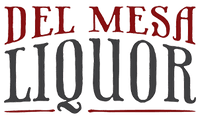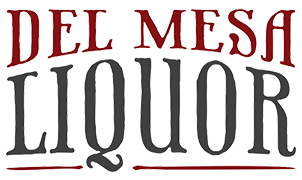Have you ever had a bottle of wine that you bought but didn't finish? Or perhaps you're wondering how long a wine bottle will last after opening? After being opened, wine can remain fresh for several days or even weeks, depending on how it is stored. This article will discuss how to store wine once it has been opened and keep it as fresh as possible.
Whereas the oxidation process in an open wine bottle is unavoidable, you can speed it up by using the correct storage methods.
Life's too short to waste it on lousy wine, according to the bartenders! A lousy glass of wine may crush a wine lover's heart more than anything. You want to ensure that the wine maintains its freshness and flavor when you store it for a few days. The advice below will make it simpler to enjoy wine whenever the mood strikes.
How Does Wine Go Sour After Opening?
Depending on the type of wine, different wines age differently after opening. For instance, red wines typically age better than white wines. However, the wine typically has a shelf life of a few days to a few weeks after opening. Despite excellent wine preservation techniques, your wine won't stay fresh indefinitely.
1. Wine Stoppers

If you unintentionally throw away the cork, you can get wine stoppers with adorable and decorative patterns. They produce an airtight seal and are constructed of metal or plastic.
Because it is difficult to insert the original cork back into the bottleneck, wine stoppers are employed. Find the ones with softer flanges at the top if you can. They are available at wine stores and online. For sparkling wines, there are stoppers made expressly for them.
2. Store In Dim Light

Always try to limit your exposure to light. Natural light from the sun can generate a buildup of heat within the wine bottle, accelerating the oxidation process. Hence it is best to store wine bottles away from natural light sources. Keep your wine away from windows and other natural light sources to ensure more excellent, humid conditions and stop UV rays from hitting the bottles and producing an unpleasant aroma.
The majority of red wine bottles come in darker-colored glass bottles because UV rays might harm the wine. Wine is better shielded from the light thanks to its dark color.
3. Keeping The Cork In Place
Businesses have recently created methods for opening red wine without removing the cork. These methods for preserving wine require inserting a needle into the cork, which creates a small opening through which a small amount of wine can escape. You can pour yourself a glass of wine in this manner without having to open the entire bottle.
4. Refrigerate It
Place your wine in the refrigerator as soon as you're done drinking it to stop the oxidation process in its stops. The more wine is exposed to oxygen, the faster it will begin to degrade. The exposed wine will still deteriorate even at the chilly temperature, but it will do so much more slowly.
In order to keep your wine cool enough to halt oxidation but not as cold as a normal refrigerator, using a wine cooler set at around 55 degrees is a wonderful option.
5. Inert Gas
Using an inert gas that won't react with the wine is a preferable choice. Ionized gas When argon or other gas mixes are used, the oxygen in the bottle is replaced, and a barrier is formed on the surface. Argon, which is non-reactive and denser than oxygen, forms a film that shields the wine from contact with the air, preventing oxidation.
Once the glasses have been sprayed, replace the cork as firmly as you can and place the refrigerator in an upright position.
6. Wine Shield

Here's another method for preserving the wine bottle you didn't finish. A flexible, circular disc called a "wine shield" is placed inside a partially consumed bottle of wine. This floating lid preserves the wine and functions well for a few days.
The plastic disc can float on the wine's surface since it contains small air bubbles in its construction. When the bottle is upright, it doesn't plug the neck; instead, it moves with it. For wine drinkers at home who don't finish the entire bottle in one sitting, it's a terrific option. It is also ideal for eateries and bars serving wine by the glass.
7. Vacuum Pump
Stoppers are commonly used in pump systems. To remove oxygen from the bottle, place the stopper inside and then secure the pump. This option is frequently used because many vacuum pumps are affordable, and many think they are an easy and efficient way to keep an open bottle of wine. However, some oenophiles contend that vacuum pumps compromise the wine's flavor and aroma.
8. Use Half Bottles
Consider bottling the leftover wine in a smaller container so there will be less area for air, which will result in reduced oxidation if you have only consumed half a bottle of wine, and the leftover wine is now exposed to half an of oxygen in the bottle.
If you wish to keep wine for another day, use a half bottle (150 mL, 375 mL). Most stores that sell regular wine bottles (750 ml) also sell half bottles. This low-tech method decreases the amount of air in the bottle relative to the wine.
9. Use A Sparkling Wine Stopper
The finest option for preserving sparkling wine is a Champagne stopper. They cost nothing and can maintain your bubbles for up to five days. Champagne and Cava, made using the traditional process, will age better than Prosecco, which is made using the tank method. Avoid the urge to insert a teaspoon into the bottle's neck; this is useless.
Final Thoughts
Wine is a complex and delicate beverage that, if improperly stored, can quickly become a catastrophe. Maximizing the shelf life of your wine makes sense because it's expensive to ship and store.
Wine can be stored in a number of methods, each with advantages and disadvantages. The ideal manner to keep wine after it has been opened will depend on your specific preferences and available space.
 Log in
Log in
 My Wishlist
My Wishlist Reward Program
Reward Program Corporate Gifts
Corporate Gifts Customer Help
Customer Help



